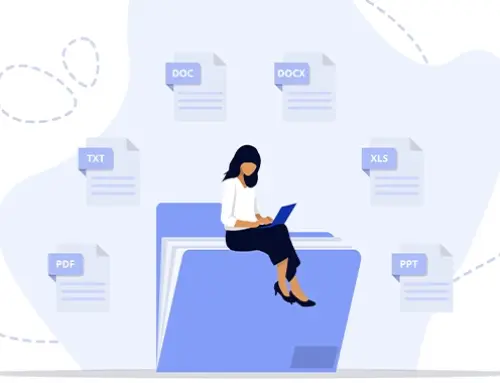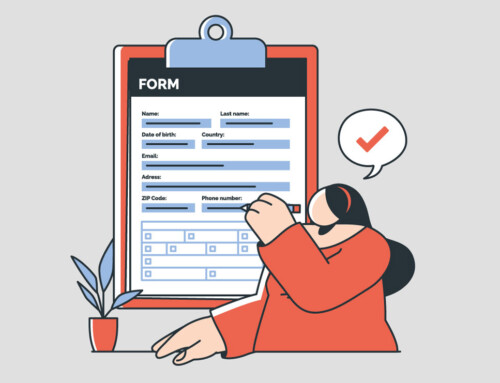Contents
Crossing the $500,000 annual income mark represents a categorical shift in a lawyer’s professional identity. At this level, attorneys transition from operating as sole service providers to managing scalable, profit-driven legal businesses.
The conventional law firm model relies on hourly billing, reactive operations, and low-margin services. This approach imposes hard limits on revenue growth. Attorneys working within these constraints typically remain confined to income levels of under $250,000, regardless of their experience or client base.
High-earning lawyers avoid these constraints. They build automated systems instead of practices. They adopt Software pricing models that separate income from hours worked. They use performance metrics, delegate non-essential functions, and treat marketing, intake, and operations as growth infrastructure.
What You Will Learn
This article outlines the structural, economic, and operational shifts that allow some lawyers to reach and exceed the $500,000 barrier. Specifically, you will learn:
- How Practice Economics Shapes Income: Why specialization, scalable billing, and differentiation produce higher margins and predictable growth.
- How Business Models Enable Leverage: Real-world examples of law firm structures that generate revenue independent of the founder’s time.
- How Mindset and Systems Drive Scale: The transition from technician to legal CEO, and the tools required to support that transformation.
This guide is for attorneys who want to break the $500,000 ceiling with intention and strategic control.
The Employee Track vs. The Ownership Track
The journey to an income exceeding $500,000 typically follows one of two distinct paths, each with its own economic model, risk profile, and timeline. Understanding this fundamental dichotomy is the first step in strategic career planning.
- The Employee Track: This is the structured, hierarchical path most commonly found in “BigLaw”—the most prominent and highest-paying law firms. On this track, income is a predictable function of seniority and adherence to an institutional framework, compensation advances in a predictable, lockstep fashion, with annual increases in salary and bonuses. The risk is relatively low, as the lawyer operates within a massive, established enterprise that provides the clients, infrastructure, and brand. The reward is a high and stable income, but one that the institution ultimately controls.
- The Ownership Track: This is the entrepreneurial path of the solo practitioner or the small-firm partner. Here, income is not determined by a preset scale, but rather is a direct function of the business’s performance. The lawyer is not just a service provider but an owner, responsible for revenue generation, cost management, and strategic growth. This path carries a significantly higher risk, the floor is far lower, and failure is a real possibility. However, the ceiling is virtually unlimited. Income is tied directly to the value the owner can create, the systems they can build, and the clients they can attract.
This report will provide the strategic frameworks necessary to excel in either. The following sections will build upon one another, progressing from the macro-level economic forces that shape all legal careers to the micro-level tactics necessary to establish a high-income career.
Legal Income Landscape
Most lawyers will never earn $500,000. This is not due to talent or effort, but rather to structure. Compensation is shaped by sector, firm model, and geography. This section maps how income is distributed in law and identifies the structural forces that enable or block high earnings.
A. Salary Realities: The Two-Peak System
Lawyer salaries cluster at two extremes. Most new graduates earn between $50,000 and $90,000 per year. These roles are concentrated in government, small businesses, and public interest organizations. A smaller group earns starting salaries of $225,000 in large law firms. This creates a bimodal distribution, not a bell curve.
Data from the National Association for Law Placement and the Bureau of Labor Statistics shows that these extremes persist throughout a career. The median lawyer earns around $145,000. Even in the top ten percent, income rarely exceeds $240,000. These numbers reveal how few lawyers reach top-tier compensation without structural leverage.
Salary data also reflects reporting bias. Large firms report nearly all salaries. Small firms often do not. This overrepresents high-income roles and understates the lower end. As a result, many law graduates enter the field with false expectations about earnings.
The legal market rewards scale, not skill. High incomes flow to lawyers who control billing structures, own equity, or work within firms designed to maximize client revenue.
B. Sector Divide: Public Interest and Private Practice
The sharpest income gap exists between public service and private practice. Entry-level public defenders earn about $70,000. Civil legal aid attorneys often start below $65,000. These salaries grow slowly. After a decade, many still earn under $90,000.
In contrast, even small private firms offer starting salaries over $150,000. BigLaw pays $225,000 from day one. Compensation rises quickly. Within six years, a BigLaw associate may exceed $495,000 in total earnings.
Federal government lawyers may earn more than their state counterparts, but the ceiling remains low. Even at top agencies like the SEC, compensation is often lower than that of a third-year associate at a major law firm.
This financial gap drives attrition. Public interest organizations lose experienced lawyers to better-paying roles. Legal aid offices cannot compete with the benefits offered by the private sector, including pension plans and retirement benefits. The result is a talent drain that weakens access to justice for vulnerable populations.
Lawyers who remain in public service often make career trade-offs. They exchange income potential for mission-driven work. However, this choice comes with long-term financial implications, particularly in terms of debt repayment and retirement security.
C. Firm Structure: Employment versus Ownership
Firm structure determines whether a lawyer can scale income. Employees operate within fixed compensation models. Owners control pricing, workload, and firm margins.
In BigLaw, compensation follows a lockstep scale. A lawyer starts at $225,000 and advances yearly based on class year. By the seventh year, earnings exceed $530,000 with bonuses. This path offers high income with low variability, but comes with intense pressure and high attrition rates.
Solo practitioners and small firm partners face more variability. Some earn less than $50,000. Others exceed $500,000 by leveraging ownership, building client pipelines, and managing firm expenses. In firms with 26 to 50 attorneys, nearly one in three partners report earnings over $500,000.
Ownership introduces risk but also scale. A partner controls revenue, staffing, and cost structure. They benefit from firm growth and recurring client work. High earners in this model focus on margin, delegation, and business development, not billable hours alone.
The distinction is structural. Employees trade security for predictability. Owners trade stability for upside. High-earning lawyers often choose ownership because it allows them to escape income ceilings imposed by traditional firm hierarchies.
D. Geography: Real Income versus Nominal Income
High nominal salaries are concentrated in cities such as Washington, D.C., New York, and San Francisco. These cities offer the highest lawyer wages but also the highest living costs. A $500,000 salary in Manhattan may yield less real income than $350,000 in Texas or North Carolina.
Cost-of-living adjustments reveal the gap. A lawyer in Austin needs just $317,000 to match the purchasing power of $500,000 in New York. In Charlotte, the equivalent figure drops even further.
Geographic arbitrage matters. Lawyers who relocate to lower-cost regions retain more after taxes and expenses. Firm owners also benefit from reduced overhead and wage costs. This improves both personal wealth and business margins.
Practice Economics: The Engine of Profitability
High revenue does not guarantee high income. Many lawyers bill a high number of hours but do not achieve elite earnings. The difference lies in how a practice manages its economics. High-earning lawyers view their practice as a business, prioritizing profitability over the volume of work.
A. Specialization in High-Value Niches
Not all legal work pays the same. Income depends on the financial stakes clients bring. Lawyers who serve high-value markets earn more. Examples include:
- Corporate law, where deals involve millions or billions of dollars
- Intellectual property law protects innovations worth billions
- High-stakes commercial litigation, where outcomes can affect company survival
- Personal injury cases with multi-million-dollar settlements on contingency fees
Lawyers working in lower-value areas, such as family law or bare trusts, often face an earnings ceiling because their clients typically have limited financial resources. The first step toward breaking $500,000 in income is choosing a practice area where the client’s financial stakes justify high fees.
B. Choosing and Mastering Billing Models
How lawyers charge their clients shapes their income. The traditional hourly rate pays for time but rewards inefficiency. Many firms get trapped in this model, billing hours but losing money due to slow collections and client disputes.
High-earning lawyers adopt billing methods tailored to their specific practices, thereby enhancing profitability. These include:
- Flat fees for predictable, routine services, rewarding efficiency
- Contingency fees for plaintiff cases, aligning lawyer success with client recovery
- Value-based or hybrid models that link fees to outcomes, allowing premium pricing
Simply selecting the right billing model is not enough. Realization is critical. This means turning billed work into actual cash collected. Poor billing clarity, late invoicing, and weak collections reduce income by tens of thousands or more each year. Efficient firms invoice promptly, follow up rigorously, and use legal-specific software to maximize cash flow.
C. Running a Practice Like a Business
High-Earning Lawyers operate with a business mindset. They analyze their cost structure, track key financial metrics, and adjust their strategy accordingly. This approach differs from treating the law as only a technical profession.
They invest in marketing and client acquisition where it counts. They measure client lifetime value to focus efforts on profitable relationships. They delegate routine tasks to improve leverage and reduce unbillable hours.
They build systems that increase profitability without increasing hours. This shift from trading time for money to owning a scalable business model unlocks growth beyond traditional ceilings.
D. Strategic Takeaway for Ambitious Lawyers
To break the $500,000 barrier, lawyers must:
- Choose high-value niches where clients pay premium fees
- Adopt billing models that align fees with value and improve realization
- Run operations with business discipline, maximizing collections and minimizing waste
- Develop scalable systems, leveraging others and technology
Without managing these practice economics, lawyers remain limited by client financial capacity, billing inefficiencies, and outdated business models.
Four Proven Models for High-Earning Lawyers
Theoretical discussions of strategy and economics are best understood through real-world application. The path to an income exceeding $500,000 is not monolithic; it is achieved through various business models tailored to different strengths, risk tolerances, and market opportunities. The following four archetypes illustrate how the principles of sector choice, firm structure, niche specialization, and billing are combined to build highly lucrative legal careers.
BigLaw Equity Partnership: Earning a share of firm profits.
This archetype represents the zenith of the “employee” track, having successfully navigated the demanding hierarchy of a large, institutional law firm. Their income, which can easily run into the millions, is not a salary but a share of the firm’s profits. Their journey began on the predictable lockstep compensation scale, where they crossed the $500,000 threshold as a senior associate in their seventh or eighth year of practice.
To leap to an equity partner, however, they had to prove their value beyond mere technical competence. Their success now hinges on three key functions: servicing a portfolio of high-value institutional clients (typically large corporations), managing large teams of associates and paralegals to execute complex legal work, and, most importantly, generating a significant “book of business.” They are rainmakers, responsible for bringing millions of dollars in revenue into the firm. Their business model is that of a manager and salesperson within a massive, diversified enterprise. The firm’s institutional brand subsumes its brand, and its success is a function of its ability to leverage the firm’s platform to attract and retain elite clients.
Elite Boutique Firm: Maximizing rates through specialization.
This lawyer operates at the opposite end of the size spectrum but at the same peak of the value chain. The Elite Boutique Founder has rejected the BigLaw model in favor of creating a small, hyper-specialized firm that competes on pure expertise, not scale. Their practice is focused on a narrow, high-stakes niche, such as appellate litigation, specialized regulatory work, or intellectual property disputes for technology companies.
Their business model is characterized by low volume and high margins. They command premium rates that often exceed those of their Big Law counterparts, with hourly rates potentially reaching $1,000 to $1,200 or more per hour. Their clients, often sophisticated corporations or high-net-worth individuals, are willing to pay these rates because the founder is a recognized authority in their field. To maintain this edge, they may even pay their associates above the standard Cravath scale to attract the best talent from BigLaw. Their success is not built on a massive client list but on a sterling reputation and the ability to deliver exceptional results in matters where the stakes are highest. Their income is a direct reflection of the market’s valuation of their unique expertise.
High-Stakes Contingency: Securing massive, firm-funding verdicts.
This archetype runs their law firm as a high-volume, high-risk, high-reward business, most commonly in the field of plaintiffs’ injury. Their path to a seven-figure income is paved not by hourly billing but by securing a small number of massive verdicts and settlements that fund the entire operation. Their firm’s case results page serves as their primary marketing tool, showcasing multi-million-dollar recoveries, including $5 million for a car accident, $10.2 million for a DUI victim, and an $18.9 million jury verdict for a crash victim.
This lawyer’s skillset extends far beyond the courtroom. They are expert marketers and business operators. Their model requires a significant upfront investment in advertising and case acquisition to generate a high volume of leads. Success depends on a rigorous and systematic intake process to filter these leads, carefully selecting only those cases with the potential for a large payout. They understand the economics of their practice intimately, knowing they must reject more minor cases with limited insurance policies to conserve resources for the “big hits”. Their firm is a system designed to process a large number of cases efficiently while identifying and aggressively litigating the few that promise exponential returns. This lawyer is a calculated risk-taker who leverages the contingency fee model to its full potential.
Systematized Small Firm: Building wealth through operational efficiency.
This archetype is the most instructive, as it demonstrates that an income well over $500,000 is achievable even outside of corporate law or high-stakes litigation. Their success is not derived from premium rates or massive verdicts, but from extreme operational efficiency and the creation of replicable systems. They have fundamentally shifted their mindset from practicing law to building a business that delivers legal services.
One prime example is the Social Security Disability practice model. Such a practice can be a high-volume, low-stress business where the majority of the “grunt work”—including client intake, form completion, and medical record collection—is automated or delegated to a well-trained staff of paralegals and legal assistants. The lawyer’s time is reserved for the highest-value tasks, such as appearing at hearings, allowing them to handle a vast caseload with minimal personal involvement in each file.
Another version is the modern, value-based practitioner. The case study of Todd Jarvis, an estate planning attorney, is illustrative of this point. By abandoning the billable hour and adopting the New Law Business Model (NLBM), he focused on providing a comprehensive, flat-fee planning service. He systemized his client meetings and marketing presentations, eventually moving to an entirely virtual practice. The results were transformative: in just 10 months, he increased his Revenue by 750%, raised his average fee by 200% to $4,500, and reduced his working hours to just 25 per week. This archetype’s success is built on creating a scalable and efficient delivery model that allows them to serve more clients, provide greater value, and generate high profits without being constrained by the billable hour.
The CEO Mindset: The Key to make 500k as a lawyer
The journey to an income exceeding $500,000, particularly for those on the ownership track, requires more than just legal expertise and strategic market positioning. It demands a profound internal transformation: a shift in identity from a lawyer who practices law to a CEO who builds a business. This evolution in mindset is the single most critical factor that separates high-earning firm owners from their peers who remain stuck as overworked practitioners. It involves fundamentally changing how one views their role, their team, and their relationship with the financial and operational mechanics of the firm.
The Practitioner-to-Owner Mindset Shift: Focus on building a business
Most attorneys are trained to be expert practitioners. Their education and early-career experience instill a focus on mastering legal doctrine, managing individual cases, and maximizing billable hours. This practitioner mindset, while essential for delivering high-quality legal services, can become a bottleneck to growth. The lawyer who thinks like a CEO, by contrast, focuses on a different set of questions. Instead of asking, “How do I solve this client’s legal problem?” the CEO asks, “How do I build a system that solves this type of legal problem profitably and at scale?”.
This shift manifests in several key behavioral changes:
- From Doer to Leader: The practitioner is the primary “doer” of the work. The CEO is the leader who builds and empowers a team to accomplish its goals.
- From Case Focus to Pipeline Focus: The practitioner worries about the next deadline in their current case. The CEO is concerned about building a marketing and sales pipeline that will generate 100 new cases.
- From Risk Aversion to Risk Management: Legal training instills a deep-seated aversion to risk, teaching lawyers to identify and eliminate every potential negative outcome. A CEO, however, engages in strategic risk analysis, weighing the potential upside against the likelihood and cost of a negative outcome to make informed business decisions. This represents the transition from a worldview that begins with “no” to one that starts with “yes, if…” or “how can we?”
Systematization and Delegation: Establish systems to facilitate growth and scalability.
A law firm that depends entirely on the owner’s involvement in every task cannot scale. The CEO-lawyer’s primary job is to build a “machine”—a set of systems and processes that allows the firm to deliver consistent, high-quality service without their constant intervention.
This process begins with the creation of Standard Operating Procedures (SOPs) for every critical function of the firm, including client intake, case management, document drafting, client communication, and billing. These SOPs enable effective delegation. By documenting the “how” of the firm’s work, the owner can confidently offload tasks to associates, paralegals, and administrative staff, thereby freeing up their own time to focus on high-value activities such as strategy, business development, and managing key client relationships.
Modern technology and outsourcing are the superchargers of this process. The legal industry is rapidly adopting automation and Legal Process Outsourcing (LPO) to handle tasks that were once the domain of lawyers. Firms are now using AI-powered tools and external services for document review, contract drafting, legal research, and eDiscovery.This trend allows firms to operate with greater efficiency, reduce overhead costs, and scale their operations seamlessly to handle fluctuating workloads. Case studies of firms that have adopted technology, such as practice management software, demonstrate significant results, with some increasing revenue by 25-40% or capturing 30% more billable hours by automating time tracking and streamlining workflows.
Data-Driven Financial Management: Use key metrics to guide your business strategy.
The most significant difference between the practitioner and the CEO is financial acumen. A practitioner views finance as a bookkeeping function—tracking Revenue and paying bills. A CEO views finance as a strategic function—using data to measure performance, diagnose problems, and guide decisions. High-earning firm owners do not run their businesses on gut instinct; they manage by the numbers, relentlessly tracking Key Performance Indicators (KPIs) that measure the financial and operational health of their enterprise.
This data-driven approach transforms financial management from a reactive chore into a proactive, strategic tool. By monitoring a dashboard of essential KPIs, the law firm CEO can gain a clear, real-time understanding of the business’s vital signs. A dip in the realization rate signals a problem with billing practices. A rising Client Acquisition Cost (CAC) may indicate that a marketing channel is no longer effective. A high Revenue per Lawyer (RPL) might signal that it’s time to hire. This financial discipline enables the CEO-lawyer to make informed, strategic decisions that drive profitability and sustainable growth.
Essential Financial & Operational KPIs for the Law Firm CEO
To effectively manage by the numbers, focus on these three key areas:
- Financial Health
These metrics measure the core profitability and financial stability of your firm.
- Revenue per Lawyer (RPL): Calculated as Gross Revenue divided by the number of lawyers, this is a primary measure of firm productivity. A declining RPL can be an early warning sign of trouble.
- Net Overhead: This is the total of all operating costs, excluding lawyer salaries. It measures the firm’s efficiency in utilizing its resources.
- Profit Margin: Calculated as (Revenue – Operating Expenses) / Revenue, this is the ultimate measure of your firm’s profitability.
- Client Value
These metrics help you understand the value of your clients and the effectiveness of your marketing.
- Client Acquisition Cost (CAC): Calculated as Total Marketing Spend divided by the number of new clients, this metric measures the cost-effectiveness of your marketing efforts. A high CAC can cripple profitability.
- Client Lifetime Value (CLV): This is the Average Revenue per Client multiplied by the average client lifespan. It measures the total long-term value of a client, which helps inform your marketing spend and retention strategies.
- Productivity & Efficiency
These metrics track how effectively your firm converts work into cash.
- Utilization Rate: Calculated as Billable Hours Worked divided by the total hours in a workday, this measures how much of an attorney’s time is spent on potentially revenue-generating work.
- Realization Rate: This is the most critical efficiency metric, measuring the percentage of work performed that is converted into cash. It is calculated as (Hours Billed / Hours Worked) x (Amount Collected / Amount Billed).
- Average Collection Period: Calculated as (Accounts Receivable / Total Sales) x Number of Days, this measures how quickly your firm collects on its invoices. A prolonged collection period can signal significant cash flow issues.
The Client Acquisition Engine: Building a Predictable Pipeline
For law firm owners, legal skill is table stakes. Financial success depends on building a predictable client pipeline. The most successful firms reject hope and unpredictable referrals; they construct a systematic, multi-channel Client Acquisition Engine. Mastering this engine’s components—a powerful digital presence, authority-building content, paid advertising, and meticulous reputation management—is non-negotiable for breaking the $500k barrier.
The Digital Storefront: Your Conversion-Focused Website
Treat your law firm’s website as its most critical asset—a 24/7 digital storefront and primary salesperson. Potential clients vet you online first, judging your firm’s credibility almost entirely on its web design. Therefore, your website must be an active conversion tool engineered for one purpose: turning visitors into qualified leads. This requires a strategic approach to user experience and design.
- Prioritize a Modern, Professional, and Mobile-First Design. The site must be visually appealing and function flawlessly on mobile devices, which generate the majority of web traffic. Critically, it must load in under three seconds to prevent visitors from leaving before they have a chance to engage.
- Deliver a Clear Value Proposition “Above the Fold.” Within seconds, a visitor must understand what your firm does, who it serves, and why they should choose you. This core message, along with contact information and a primary call-to-action, must be visible without scrolling.
- Embed Conversion-Centric Elements. Make it exceptionally easy for a potential client to take the next step. This includes prominent phone numbers, simple contact forms, and live chat or chatbot integration for capturing leads outside of business hours. Use compelling calls-to-action (CTAs) like “Schedule a Confidential Consultation” instead of a passive “Contact Us.”
- Saturate the Site with Trust Signals. To overcome skepticism, integrate trust signals throughout the website. These include professional attorney biographies, client testimonials and video reviews, industry awards, and, where permitted by ethics, detailed case results.
Content as a Magnet: Demonstrating Authority and Trust
Content marketing for law firms involves replacing sales pitches with high-value legal information that helps potential clients understand their legal issues. This strategy positions you as a trusted authority, building rapport long before the initial consultation. Effective legal content must demonstrate what Google’s search algorithms reward: Experience, Expertise, Authoritativeness, and Trustworthiness (E-E-A-T).
- Develop Detailed Practice Area Pages. Go beyond a simple list of services. Explain the legal process, outline the client’s rights, and detail your firm’s unique approach to handling such matters.
- Author Informative Blog Posts and FAQs. Create content that directly answers the specific questions potential clients are typing into search engines (e.g., “statute of limitations for medical malpractice in California”). This drives highly relevant organic traffic to your site.
- Publish Case Studies and Educational Resources. Demonstrate real-world results through anonymized case studies. Create downloadable guides or whitepapers that simplify complex legal concepts, serving as powerful lead magnets to build your email list.
Paid Advertising: Turning Clicks into Clients
While content and SEO build long-term authority, Pay-Per-Click (PPC) advertising delivers immediate lead flow. It enables a firm to secure premium visibility in search results, reaching prospects at the precise moment they require legal assistance. Executing a legal PPC campaign is a science requiring precision.
- Execute Strategic Keyword Targeting. Focus on high-intent, long-tail keywords that include geographic modifiers (e.g., “Chicago commercial litigation attorney”) to attract local, qualified prospects.
- Write Compelling Ad Copy. The ad must directly address the searcher’s pain point and provide a clear solution. Highlight unique value propositions like “No Fee Unless We Win” or “24/7 Attorney Availability” to dramatically increase click-through rates.
- Utilize Optimized Landing Pages. Never send paid traffic to your generic homepage. Direct users to a dedicated landing page that mirrors the ad’s messaging and has a single, unambiguous call-to-action. Practice-specific landing pages convert at a significantly higher rate than homepages.
- Leverage Google Local Services Ads (LSAs). For many consumer-facing practices, LSAs are indispensable. These ads appear above traditional PPC results, feature a “Google Guaranteed” badge that builds instant trust, and operate on a pay-per-lead model, ensuring you only pay for genuine inquiries.
Reputation as Currency: Managing Reviews and Referrals
A lawyer’s reputation is now digital currency. Word of mouth has migrated to online review platforms, making proactive reputation management essential for client acquisition.
- Systematize Online Review Management. Implement a process to encourage satisfied clients to leave reviews on key platforms, such as Google, Avvo, and Martindale-Hubbell. A strong base of positive reviews is a powerful local SEO signal and a primary driver of client trust. Respond promptly and professionally to all reviews, especially negative ones, by acknowledging the concern and inviting an offline resolution.
- Optimize Legal Directory Profiles. Platforms like Avvo function as powerful search engines. Maximize your visibility by entirely populating your profile with a professional headshot, detailed work experience, publications, speaking engagements, awards, and peer endorsements.
- Build a Systematic Referral Network. Transform random referrals into a predictable acquisition channel. Identify and cultivate relationships with key referral sources, including other attorneys in various practice areas, accountants, and financial advisors. Use a system to track the origin of referrals and actively nurture these professional relationships.
Final Thoughts
Earning an income over $500,000 in the legal profession is not the result of chance or long hours alone; it is the outcome of deliberate strategy. For lawyers asking how to make 500k, the path is defined by mastering three fundamental transformations:
- The Economic Shift from Employee to Owner. The most direct path to a top-tier income requires transitioning from a role where a salary scale determines compensation to one where it is based on the profitability of an asset you control. While the BigLaw employee track provides a low-risk route to high six-figure pay, its potential is capped. The actual seven-figure income and the autonomy it affords belong to equity holders. This transformation demands that you embrace the risks and responsibilities of ownership to capture its unlimited upside.
- The Market Shift from Generalist to Niche Authority. A general practitioner who accepts any case is structurally limited by an inability to command premium fees or develop defensible expertise. High-earning lawyers reject this model. They deliberately select a high-value practice area—serving corporate clients in high-stakes matters or individuals in high-value contingency cases—and commit to dominating it. This specialization enables you to establish a strong reputation, attract top-tier clients, and justify the premium rates that are a prerequisite for an elite income.
- The Identity Shift from Lawyer to Marketer & CEO. For firm owners, exceptional legal skill is merely the price of entry; it does not, by itself, drive financial success. Achieving a sustainable high income requires mastering two additional roles: becoming a marketer who builds a systematic client acquisition engine, and a CEO who runs the practice with the strategic vision and financial discipline of a business executive. This means prioritizing growth, creating efficient systems, leveraging technology, and managing the firm by its key performance indicators.
This final evolution from a technician who practices law to a leader who builds a scalable, profitable business is what ultimately separates high-earning lawyers from the rest.
Tired of juggling tools and still feeling stuck below $500K? RunSensible is the all-in-one platform built to help ambitious attorneys scale smarter. Combine CRM, intake, e-signatures, case management, and marketing in one streamlined system. Automate your follow-ups, close more clients, and reclaim your time. Schedule a demo now!
FAQs
1. Can solo attorneys make $500K or more?
Yes. Solo attorneys can exceed $500K in annual income. The key is to stop trading time for money and start thinking like a business owner. With the right niche, scalable billing models, streamlined operations, and a strong client acquisition system, solo practitioners can outperform many associates and even partners at traditional firms.
2. Do I need to specialize to earn more?
Specialization is one of the fastest paths to higher income. High-earning attorneys focus on narrow, high-value niches where clients have significant financial stakes, such as corporate law, intellectual property, or high-stakes litigation. This focus allows them to command premium fees, build authority, and target marketing more effectively.
3. How much should I spend on marketing?
A general benchmark is to allocate 7 to 12 percent of your gross revenue to marketing if you want to grow. This includes SEO, paid ads, website optimization, and content creation. The most successful lawyers treat marketing as a core investment and track ROI with the same rigor as financial performance.
4. What’s the biggest mistake lawyers make when trying to grow?
The biggest mistake is relying solely on referrals or word of mouth without building systems for consistent growth. Many attorneys also underinvest in digital infrastructure, such as marketing automation, client intake systems, and reputation management, which limits their ability to scale effectively.
5. What mindset shift is required to break the $500K ceiling?
To reach $ 500,000 and beyond, lawyers must shift from being practitioners to CEOs. This means running a business, not just delivering legal work. High earners focus on building systems, delegating tasks, utilizing data to inform decisions, and establishing scalable operations that are not dependent solely on their time.
6. How do top-earning lawyers build predictable client pipelines?
They create a Client Acquisition Engine—a structured, multi-channel system that includes a high-converting website, search-optimized content, paid advertising, and proactive review and directory management. This system generates consistent, high-quality leads without relying on chance.
7. What financial metrics do high-income law firms track to stay profitable?
Top firms track metrics like Revenue per Lawyer (RPL), Client Acquisition Cost (CAC), Client Lifetime Value (CLV), utilization and realization rates, and average collection periods. These indicators help identify inefficiencies, inform investment decisions, and support scalable, data-driven growth.
References
- NALP Research: Compare NALP’s bimodal salary curve over … – NALP
https://www.nalp.org/salarydistrib - Salary Distribution Curves – Archive – National Association for Law Placement – NALP
https://www.nalp.org/salary_distribution_curves_archive - Lawyers – Bureau of Labor Statistics – BLS
https://www.bls.gov/oes/2023/may/oes231011.htm - NALP’s Public Service Attorney Salary Survey Shows Pay Remains Lowest at Civil Legal Services Organizations – NALP
https://www.nalp.org/0524research - Public Interest Salaries – National Association for Law Placement – NALP
https://www.nalp.org/publicsectorsalaries - 2025 Pay Parity White Paper – The New York Legal Services Coalition
https://nylscoalition.org/2025payparity - 2024-2025 Biglaw Bonuses and Salary Scale: A Comprehensive Guide to the Cravath System and Industry Trends – LawCrossing
https://www.lawcrossing.com/employers/article/900055731/2024-2025-Biglaw-Bonuses-and-Salary-Scale-A-Comprehensive-Guide-to-the-Cravath-System-and-Industry-Trends/
Disclaimer: The content provided on this blog is for informational purposes only and does not constitute legal, financial, or professional advice.







